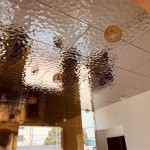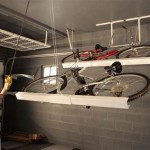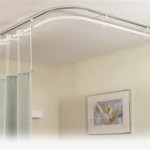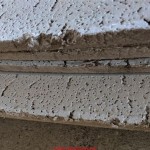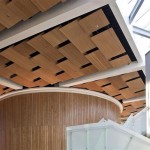Led Strip Light Ceiling Design For Living Room
The integration of LED strip lights into living room ceiling designs has revolutionized interior lighting possibilities. This technology offers both functional illumination and aesthetic enhancement, enabling homeowners and designers to create dynamic and personalized spaces. LED strips are versatile, energy-efficient, and relatively simple to install, making them a popular choice for modern living rooms. The following discussion will detail various design considerations and implementation strategies for incorporating LED strip lights into living room ceiling designs.
One of the primary advantages of LED strip lights is their flexibility. They can be easily cut to desired lengths and shaped to fit various architectural features. This adaptability allows for creative lighting solutions that are not easily achievable with traditional lighting fixtures. Furthermore, the color-changing capabilities of some LED strips provide the option to adjust the ambiance of the living room to suit different moods or occasions. From warm, inviting tones for relaxation to bright, energizing colors for social gatherings, the possibilities are vast.
The following sections will explore specific design techniques, installation considerations, and the benefits of using LED strip lights in living room ceilings.
Ambient Lighting with Cove Lighting
Cove lighting, using LED strip lights concealed within architectural recesses in the ceiling, is an effective method for creating ambient lighting. This technique involves installing the LED strips within a cove or trough, directing the light upwards to reflect off the ceiling surface. The indirect illumination provides a soft, diffused glow that eliminates harsh shadows and reduces glare. This is particularly advantageous in living rooms, where comfortable and relaxed atmospheres are often desired.
The design of the cove itself is crucial to the overall effect. The depth, width, and angle of the cove influence the distribution and intensity of the light. A deeper cove generally allows for a wider spread of light, while a shallower cove may result in a more concentrated beam. The material used for the cove construction also impacts the light's reflection. Light-colored, matte surfaces are ideal for maximizing diffusion and minimizing hotspots. It is important to ensure the cove is smoothly finished and free of imperfections, as these will be highlighted by the indirect illumination.
Choosing the appropriate LED strip for cove lighting is also essential. Strip lights with a high density of LEDs per meter generally provide a more uniform and consistent glow. The color temperature of the LEDs should be carefully considered to match the desired ambiance. Warm white light (2700K-3000K) is typically preferred for creating a cozy and inviting atmosphere, while cool white light (4000K-5000K) can provide a brighter and more modern feel. The wattage of the LED strip determines the overall brightness of the cove lighting. It is recommended to select a wattage that provides sufficient illumination without being overly bright or causing eye strain.
Installation of LED strip lights in a cove requires careful planning and execution. It is important to ensure the LED strips are securely attached to the cove surface using appropriate adhesive or mounting clips. The power supply and wiring should be concealed within the ceiling cavity for a clean and uncluttered appearance. A dimmer switch can be installed to allow for adjustable light intensity, further enhancing the versatility of the cove lighting system. Careful consideration should be given to ensuring the LED strip lights are easily accessible for maintenance or replacement if needed.
Accent Lighting with Recessed Channels
Recessed channels provide a more focused and directional lighting effect compared to cove lighting. These channels are typically installed flush with the ceiling surface, creating a clean and minimalist aesthetic. LED strip lights are then placed within the channel, directing the light downwards or at a specific angle. This technique is well-suited for highlighting architectural features, artwork, or specific areas within the living room.
The design of the recessed channel is crucial for achieving the desired lighting effect. Channels can be made from various materials, including aluminum, plastic, or wood. Aluminum channels are particularly popular due to their durability, heat dissipation properties, and ability to be easily painted or powder-coated to match the ceiling finish. The channel's width and depth should be carefully chosen to accommodate the LED strip lights and provide adequate space for heat dissipation. The channel's profile can be either linear or curved, allowing for creative design possibilities.
The selection of LED strip lights for recessed channels depends on the desired lighting effect and the channel's dimensions. Narrower LED strips are typically used in shallower channels, while wider strips can be accommodated in deeper channels. The LED density and color temperature should be chosen to match the desired ambiance and the specific application. For highlighting artwork, high CRI (Color Rendering Index) LED strips are recommended to accurately reproduce the colors of the artwork. Dimmable LED strips are also beneficial for adjusting the light intensity to suit different situations.
Installation of recessed channels requires careful planning and execution. The channels should be securely mounted to the ceiling structure using appropriate fasteners. The LED strip lights should be carefully placed within the channel and connected to a power supply. The wiring should be concealed within the ceiling cavity for a clean and professional appearance. A dimmer switch can be installed to allow for adjustable light intensity. It is important to ensure the recessed channels are installed in accordance with local electrical codes and safety regulations.
Creating Patterns and Designs
LED strip lights offer the potential to create intricate patterns and designs directly on the living room ceiling. These designs can range from simple geometric shapes to complex artistic installations. This approach allows for a high degree of personalization and the creation of a unique focal point within the living room.
Planning is crucial when designing ceiling patterns with LED strip lights. The desired pattern should be carefully mapped out on the ceiling surface before installation. This can be done using stencils, templates, or even digital projections. The complexity of the design will influence the installation time and the amount of materials required. Simpler designs, such as straight lines or geometric shapes, are relatively easy to install, while more complex designs may require professional assistance.
The choice of LED strip lights depends on the desired effect and the design's complexity. Flexible LED strips are ideal for creating curved lines and intricate shapes. Addressable LED strips, which allow for individual control of each LED, offer the greatest flexibility for creating dynamic and animated patterns. The color and brightness of the LED strip lights should be carefully chosen to complement the overall design and the existing decor of the living room. The use of color-changing LED strips can further enhance the visual impact of the design.
Installation of LED strip lights in patterns requires careful attention to detail. The LED strips should be securely attached to the ceiling surface using appropriate adhesive or mounting clips. It is important to ensure the LED strips are properly aligned and spaced to create the desired pattern. The wiring should be concealed within the ceiling cavity for a clean and professional appearance. A controller can be used to program the LED strip lights to display different patterns or animations. It is important to ensure the LED strip lights are installed in accordance with local electrical codes and safety regulations.
In summary, LED strip lights offer a wide range of possibilities for enhancing the aesthetic appeal and functionality of living room ceiling designs. Careful planning, design considerations, and professional installation are crucial for achieving the desired results. By utilizing the versatility of LED strip lights, homeowners and designers can create personalized and dynamic living spaces that reflect their individual tastes and preferences.

5 False Ceiling Strip Light Designs To Transform Your Space Beautiful Homes

False Ceiling Strip Light Design For Modern Homes

5 False Ceiling Strip Light Designs To Transform Your Space Beautiful Homes

Led False Ceiling Lights For Living Room Strip Lighting Ideas In The Interior

40 Led Ceiling Lights For Your Home Office

The Ultimate Led Strip Lighting Guide Ideas And Installation Tips Switchofy

Dazzling Design Unleashing Creativity With Led Strip Lights

How Led Strips Define Modern Spaces Decoration

Where To Place Led Light Strips In Your Living Room Neon Strip

High Density Strip Lighting Ceiling Installation
Related Posts

